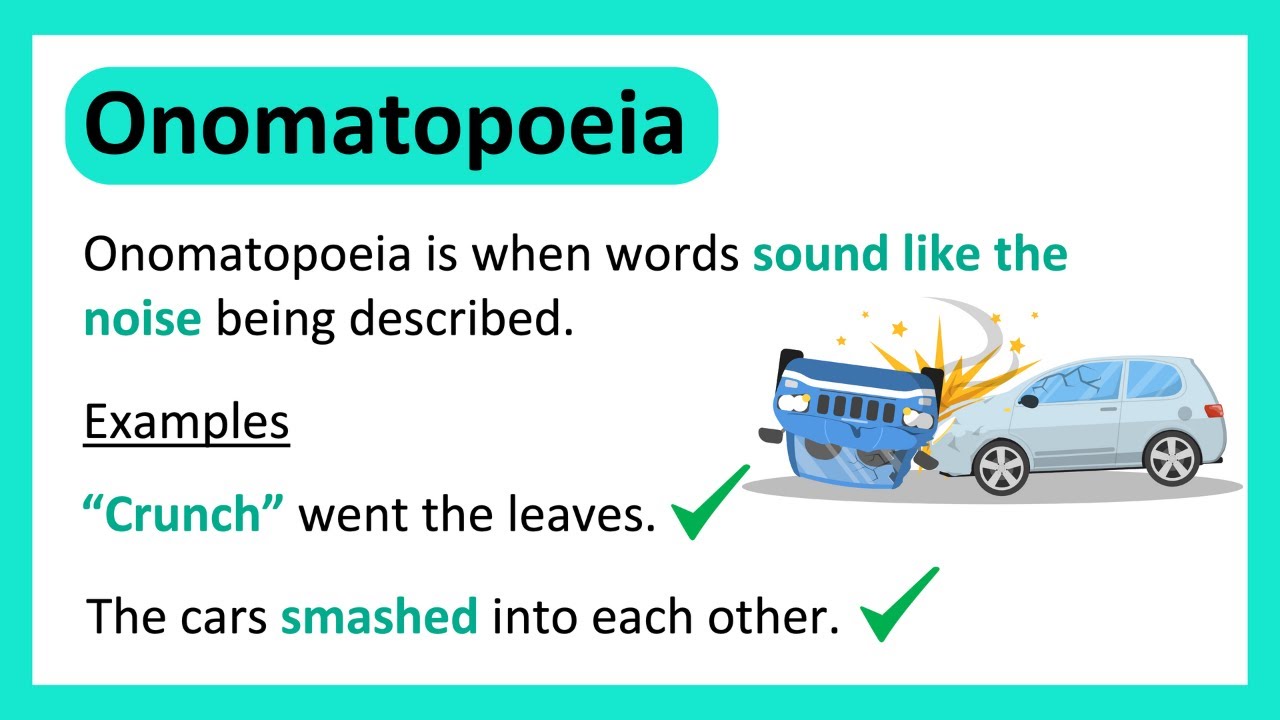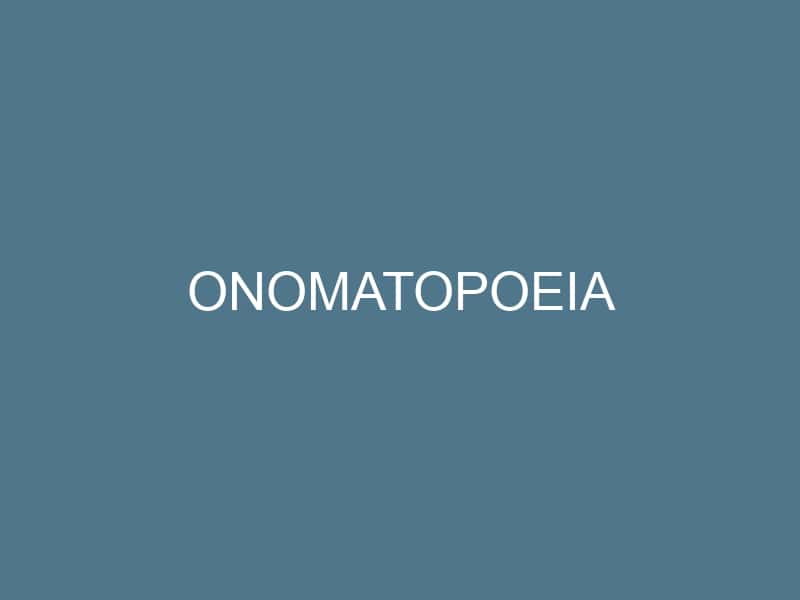Onomatopoeia is a word that describes a sound that is made by an object or action. For example, the word “”boom”” is an onomatopoeia for the sound of an explosion. People search for this keyword on Google to find out more about the concept of onomatopoeia, to see examples of onomatopoeia in use, or to learn how to use onomatopoeia in their own writing.
What is Onomatopoeia?

Onomatopoeia is a word that describes a sound that is made by an object or action. For example, the word “”boom”” is an onomatopoeia for the sound of an explosion. Onomatopoeia is a type of sound symbolism, which is the use of words that sound like the thing they are describing. Other examples of sound symbolism include words like “”hiss,”” “”screech,”” and “”thump.””
Onomatopoeia is a common feature of many languages, and it is often used to add realism and vividness to writing. For example, a writer might use the word “”crash”” to describe the sound of a car accident, or the word “”swoosh”” to describe the sound of a bird flying overhead.
Onomatopoeia can also be used for humorous effect. For example, a writer might use the word “”sploosh”” to describe the sound of a person falling into a pool of water, or the word “”kersplat”” to describe the sound of a person falling down.
Overall, onomatopoeia is a versatile and effective tool that can be used to add realism, vividness, and humor to writing.
Also read: LMS Meaning
Examples of Onomatopoeia in the English Language
There are many examples of onomatopoeia in the English language. Some of the most common include:
- Bang
- Crash
- Drip
- Fizz
- Hiss
- Meow
- Oink
- Plop
- Squeak
- Swoosh
- Woof
These words are all used to describe sounds that are made by objects or actions. They are often used in poetry, advertising, and children’s literature.
Onomatopoeia in Action
Literary Enhancements
One of the primary applications of onomatopoeia is in literature. It adds depth and vividness to descriptions. Consider this transformation:
- Original: “The wind blew through the trees.”
- Enhanced: “The wind whistled through the trees.”
Animal Sounds
Onomatopoeia is a powerful tool when depicting animal sounds:
- Instead of “The duck made a sound,” try “The duck went quack.”
Onomatopoeia in Everyday Life
From the crunch of leaves underfoot to the beep of a car horn, onomatopoeic words permeate our daily experiences:
- “The leaves crunched under my feet as I walked through the woods.”
- “The car horn beeped loudly.”
Also read: GRWM Meaning
Table: Everyday Onomatopoeia Examples
| Situation | Onomatopoeic Word |
|---|---|
| Walking through woods | Crunch |
| Car horn sounding loudly | Beep |
| Water going down the drain | Gush |
| Wind howling in the darkness | Howl |
| Microwave popcorn popping | Pop |
Onomatopoeia Words: A Comprehensive List
Delve into a rich catalog of onomatopoeic words that capture the essence of various sounds. Here are just a few:
- Bam
- Buzz
- Chirp
- Giggle
- Growl
Table: Onomatopoeia Words
| Sound | Onomatopoeic Word |
|---|---|
| Sneezing | Atishoo |
| Dog barking | Bark |
| Clock ticking | Tick |
| Rain falling | Drip |
Common Mistakes to Avoid When Using Onomatopoeia
When used incorrectly, onomatopoeia can actually detract from your writing rather than add to it. Here are a few common mistakes to avoid when using onomatopoeia:
* **Overusing onomatopoeia.** Using too much onomatopoeia can make your writing sound childish or gimmicky. It’s important to use onomatopoeia sparingly, and only when it’s appropriate.
* **Using unrealistic onomatopoeia.** The sounds that you use in your onomatopoeia should be realistic and believable. If you use sounds that are too exaggerated or unrealistic, it will take your readers out of the story.
* **Using onomatopoeia that is too long or complicated.** Onomatopoeia should be short and concise. If your onomatopoeia is too long or complicated, it will be difficult for your readers to read and understand.
* **Using onomatopoeia that is repetitive.** It’s important to vary the onomatopoeia that you use in your writing. If you use the same onomatopoeia over and over again, it will become repetitive and boring.
By avoiding these common mistakes, you can use onomatopoeia effectively in your writing to create vivid imagery and add interest to your stories.
Also read: LBVS Meaning
Conclusion
Onomatopoeia is a powerful tool that can be used to add interest, clarity, and vividness to your writing. By understanding the concept of onomatopoeia and how to use it effectively, you can create writing that is more engaging and memorable for your readers.
Here are some tips for using onomatopoeia effectively in your writing:
- Use onomatopoeia sparingly. Too much onomatopoeia can be distracting and annoying.
- Choose onomatopoeia that is appropriate for your audience and the tone of your writing.
- Use onomatopoeia to create a vivid and sensory experience for your readers.
- Use onomatopoeia to add emphasis or to create a sense of urgency.
With a little practice, you can use onomatopoeia to create writing that is both effective and enjoyable.
Also read: DATY Meaning
FAQ
Q: What is the difference between onomatopoeia and alliteration?
A: Onomatopoeia is the use of words that imitate the sounds they describe, while alliteration is the repetition of consonant sounds at the beginning of words. For example, the word “”bang”” is an onomatopoeia for the sound of a loud noise, while the phrase “”the quick brown fox jumped over the lazy dog”” is an example of alliteration.
Q: What are some common onomatopoeias in the English language?
A: Some common onomatopoeias in the English language include:
- Bang
- Boom
- Crash
- Drip
- Hiss
- Meow
- Oink
- Squeak
- Swoosh
Q: How can I use onomatopoeia effectively in my writing?
Here are a few tips for using onomatopoeia effectively in your writing:
- Use onomatopoeia sparingly. Too much onomatopoeia can be distracting and make your writing sound childish.
- Use onomatopoeia to create a vivid sensory experience for your readers.
- Use onomatopoeia to add emphasis to a particular point.
- Use onomatopoeia to create a sense of humor.
Q: What are the benefits of using onomatopoeia?
Onomatopoeia can have a number of benefits in writing, including:
- It can help to create a vivid sensory experience for readers.
- It can help to add emphasis to a particular point.
- It can help to create a sense of humor.
- It can help to make your writing more memorable.
Q: What are some common mistakes to avoid when using onomatopoeia?
Here are a few common mistakes to avoid when using onomatopoeia:
- Using too much onomatopoeia.
- Using onomatopoeia that is not appropriate for the context.
- Using onomatopoeia that is not realistic.
- Using onomatopoeia that is overused.








4 thoughts on “Onomatopoeia”